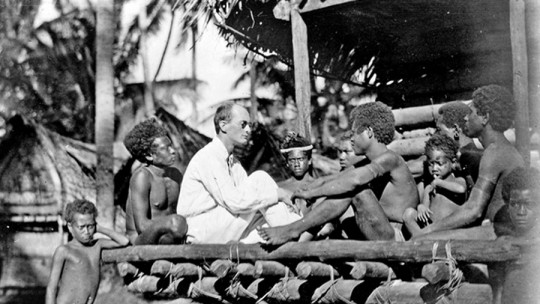
In the field of psychological evaluation, countless contexts can be proposed in which various behaviors can arise, providing a wide variety of information that can be collected in order to be verified and analyzed later.
Due to this wealth of information, different methods have been developed, among which is the observational method, which consists of a process of the scientific method that is used to observe and analyze perceptible behaviors, which normally develop in natural contexts.
In this article we will explain the observational method in more detail as well as its most relevant characteristics.
What is the observational method?
The observational method is that strategy that follows the scientific method with the objective of being able observe and study people’s behaviors in a non-reactive way that is, in a natural context where the evaluated subjects behave spontaneously and where the evaluated person does not intervene or modify any contextual aspect.
Because the observational method is within the different modalities of the scientific method, it must also meet a series of requirements to adjust to a formal procedure that has been developed in a sequence, step by step and in order, so that it can be applied correctly. a structured way.
This modality of the scientific method uses the technique of observation using specific instruments and resources, which have been specifically designed for this type of methods to obtain a series of data related to variables of the subjects being analyzed that are of interest to the observer in a non-reactive way (for example, questionnaires, a Gesell camera with a unidirectional glass, a notepad, a video camera, among others).

Requirements that must be met in the observational method
For the observational method to be recognized as a modality within the scientific method and also reliable, it should have a series of very important aspects, such as those discussed below.
The observer has to be an expert in the use of this methodology or, at least, should have been trained to apply this type of methods with enough hours of practice to be able to carry it out successfully so that the observational method is reliable.
Before starting with the observations, it is necessary to have established a series of objectives and also hypotheses related to what is intended to be analyzed through the operational methodology
When choosing the context in which the operational methodology is going to be carried out, it is necessary that a perceptible observation objective has previously been chosen. Therefore, if we wanted to measure a person’s emotions or thoughts, it would not be possible using this method; However, exchanges of gaze, response levels through gestures, postures, etc. could be measured. which are related to the cognitive level of the people to be analyzed.
The observational method should be carried out in a natural context if possible, in order to analyze people’s behaviors in the most reliable way possible. Although, on those occasions when it is not possible to carry out the observation in a natural context, it is necessary to use an artificial context as similar as possible to the natural one so as not to lose reliability.
The observer who uses an observational methodology You must ensure that you collect the data following a systematization and ensuring that it is as objective as possible using recording instruments that are non-invasive and that allow observation under control conditions, as well as that also offer the possibility of being complemented with other technical resources, such as a video camera.
In short, all these requirements together form the systematic observational methodology used in psychology, whose fundamental tool is observation, which is understood as a scientific method and also as a technique.
Types of observational method
In the observational method there are two types of people who are fundamental for this method to be possible: the observing subject and the observed subject, there being a psychological distance between the two. Depending on this distance, there are 4 different levels.
1. Non-participant observer
In this case, The observed subject and the observing subject, who is usually the one who carries out the observational method, have no relationship nor interaction any, which allows us to guarantee a maximum level of objectivity.
2. Participant observer
Here we are faced with a case in which the observer is responsible for directing the observed subject, so that here there is interaction between them In this case there could be a certain level of interference, so that some degree of objectivity is lost.
3. Participation-observation
In this modality the observer and the observer have less psychological distance between them because they know each other and have some degree of relationship (for example, they are family members, professionals who work in the same work team, etc.).
By knowing the observer, the degree of interference increases considerably. However, there is an advantage in this case, and that is that this could facilitate the observation because the observer has very important information about the observed that may be relevant to the objective of the observation.
4. Self-observation
This case occurs when a subject must make an observation to himself in other words, when the observed and the observer are the same person.
Units of analysis within the observational method
The units of analysis found in the observational method are those variables, events or phenomena that must be determined ; In other words, it is important that before carrying out the observational method the units of analysis have been previously defined, and that the behaviors or units of analysis of a subject must be defined correctly and with a low level of interference for the analysis to be effective. observation.
Therefore, it is important that observation is responsible for subdivide the behaviors of the subject to be analyzed into units that are more precise being as concrete as possible and not such global and generic concepts, such as anxiety or depression.
The most common units of analysis within the observational method are the following:
- Overt behaviors that offer the possibility of being observed.
- Interactions between two or more people.
- Emotions or attributes that are not directly observable but that can be inferred through expressions.
- Behavioral products or results obtained from a set of actions in natural contexts.
Objectives of this research method
The final objective of the observational method is to obtain information about a problem or behavior in order to understand it in greater depth and the first step that must be taken is to choose the topic of observation and research, always following a previously designed and guided observational method in accordance with the objectives and needs.
It must be kept in mind at all times that the observational method is not infallible or applicable to all problems, so it is necessary to analyze whether it will be useful for the type of observation that we intend to carry out and if it is feasible with the available resources.
Thus, We must first ask ourselves if we have a qualified and correctly trained observer in this type of observation if this method is feasible for its application to what we intend to analyze, etc.
- You may be interested: “17 curiosities about human perception”
Differences between direct and indirect observation within the observational method
Within the observational method it is relevant to differentiate between direct and indirect observation.
While Direct observation is fundamentally based on direct visual perception indirect observation includes a series of techniques and resources such as, for example, oral behavior that has been transcribed, texts from previous interviews, WhatsApp, blogs, etc.
Both types of observation can be used together, it should be noted that, in the case of indirect observation, it is advisable to take greater caution in order not to diminish the objectivity of the observation.








